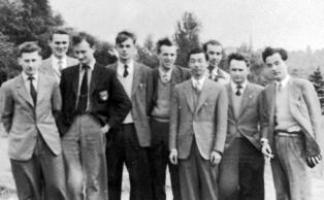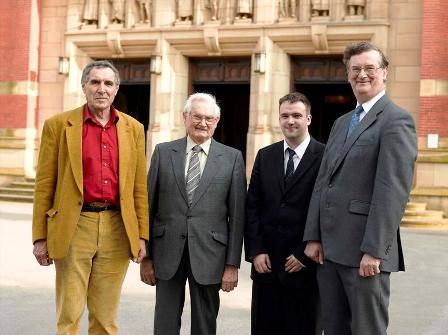 The University of Birmingham is a British 'Redbrick' civic university located in the city of Birmingham, England. Founded in 1900, its origins date back to the 1825 Birmingham Medical School and it was the first British university to gain official royal charter in the 20th century. Since its conception when Joseph Chamberlain set up the University, alumni include 8 Nobel laureates.
The University of Birmingham is a British 'Redbrick' civic university located in the city of Birmingham, England. Founded in 1900, its origins date back to the 1825 Birmingham Medical School and it was the first British university to gain official royal charter in the 20th century. Since its conception when Joseph Chamberlain set up the University, alumni include 8 Nobel laureates.
The University has been involved in many important inventions and developments in science. The cavity magnetron was developed in the Physics Department at the University by John Randall, Harry Boot and Jim Sayers. Our history in nuclear research includes scientists such as Rudolph Peierls, Otto Frisch, Claus Fuchs and Mark Oliphant during the 1940s.
 In 1943, Mark Oliphant made an early proposal for the construction of a proton-synchrotron; however, he made no assurance that the machine would work. When phase stability was discovered in 1945, the proposal was resurrected and construction began at the University with a machine that could surpass 1GeV. The University was aiming to construct the first machine to do this; however, funds were short and the machine did not start until 1953. They were beaten by the Brookhaven National Laboratory, who managed to start their Cosmotron in 1952, and get it fully working in 1953, before the University of Birmingham.
In 1943, Mark Oliphant made an early proposal for the construction of a proton-synchrotron; however, he made no assurance that the machine would work. When phase stability was discovered in 1945, the proposal was resurrected and construction began at the University with a machine that could surpass 1GeV. The University was aiming to construct the first machine to do this; however, funds were short and the machine did not start until 1953. They were beaten by the Brookhaven National Laboratory, who managed to start their Cosmotron in 1952, and get it fully working in 1953, before the University of Birmingham.

The Physics and Technology of Nuclear Reactors MSc course began in 1956, only weeks before the opening of the Calder Hall power station by Her Majesty the Queen at Sellafield. Discussions aimed at creating and running the course had begun during the previous academic session and it was started by Professor John Walker, who was joined by Derek Jakeman from Windscale laboratories. The course itself began as the Reactor Physics and Technology course and was run by Physics in collaboration with Metallurgy, Mechanical, Electrical and Civil Engineering.
In 1963, Malcolm Scott came to Birmingham to join Professor Peierls' group and ran the course in 1968, until it was eventually handed over to David Weaver in 1986. During its 54 year history, there has been approximately 625 graduates. In the year 2000, the course developed an industrial steering committee, composed of key nuclear industry companies and stakeholders, to maximise the technical direction and employability of our graduates.
 The industrial steering committee now includes over 20 nuclear-related companies and stakeholders, between them contributing financial support to underpin student development. The photograph above, taken at the 50th Anniversary of the course, shows the four people who have led and directed the MSc course over the years. In chronological order Professor John Walker (middle left), Dr Malcolm Scott (left), Dr David Weaver (right) and Dr Paul Norman (middle right).
The industrial steering committee now includes over 20 nuclear-related companies and stakeholders, between them contributing financial support to underpin student development. The photograph above, taken at the 50th Anniversary of the course, shows the four people who have led and directed the MSc course over the years. In chronological order Professor John Walker (middle left), Dr Malcolm Scott (left), Dr David Weaver (right) and Dr Paul Norman (middle right).